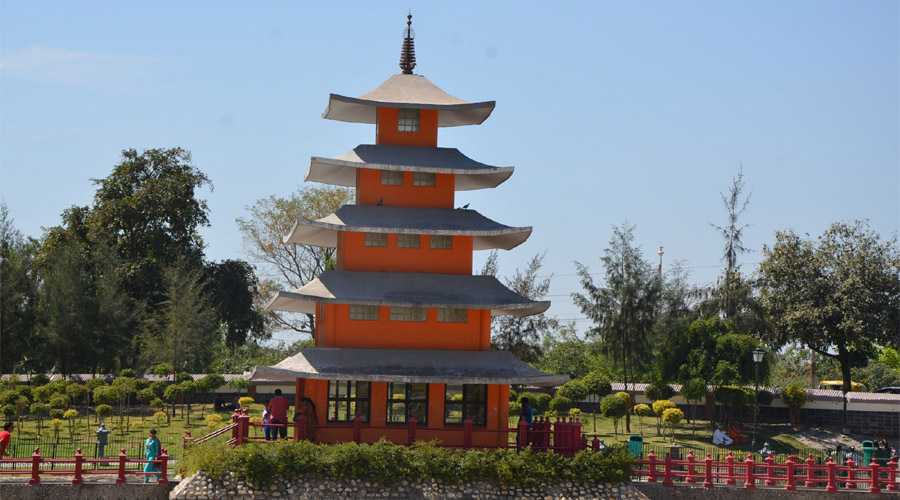The Japanese Garden in Chandigarh is a unique and serene oasis that beautifully blends traditional Japanese aesthetics with Indian cultural sensibilities. Located in Sector 31, Chandigarh, this expansive park spans 13 acres and was inaugurated in November 2014 by Shivraj Patil. Conceived and developed by the Indian government at a cost of approximately ₹6 crore, it stands as the first-ever garden in Chandigarh created with a distinctly Japanese touch, making it a notable landmark and a must-visit attraction for tourists and locals alike.
Japanese Garden Chandigarh Timings
The Japanese Garden in Chandigarh is open daily from 5:00 AM to 9:00 PM as per the official Chandigarh Tourism website and other reliable sources. Some sources mention extended hours up to 11:00 PM. For the best experience, visiting early in the morning or late afternoon is recommended, especially during the pleasant winter months (October to February). Summers can be hot, so early morning or late evening visits are preferable at that time.
Japanese Garden Chandigarh Entry Fee
The Japanese Garden in Chandigarh has no entry fee; it is open to the public free of cost. Visitors can enjoy the garden without any ticket charges. This makes it an accessible and attractive destination for all, offering a peaceful cultural and natural experience without any financial barrier.
Origins and Cultural Significance
The garden symbolizes the cultural friendship between India and Japan, aiming to promote understanding and appreciation of Japanese culture within India. While Chandigarh is known globally for its urban planning and architecture pioneered by Le Corbusier, the Japanese Garden adds a fresh cultural dimension by introducing traditional Japanese garden aesthetics and architectural elements. It serves not only as a green and tranquil space amidst the city’s hustle but also as a cultural hub where people can connect with and experience Japanese traditions in a peaceful setting.
Japanese Garden Design and Features
The garden is divided into two phases, with Phase-1 inaugurated in 2014 and Phase-2 opened to the public in 2016. These two sections are beautifully connected by an underground tunnel adorned with exquisite Japanese paintings on both sides, which provide an artistic prelude to the garden’s immersive experience.
View this post on Instagram
- Pagoda Towers: These several towers symbolize the five elements of nature — earth, wind, fire, water, and metal — and are crafted in various shapes and sizes. The pagodas are visually prominent and offer visitors striking opportunities for photography.
- Water Bodies and Waterfalls: Integral to Japanese gardens, the serene ponds and gentle waterfalls enhance the tranquility. The pond is home to lively Koi fish, a common feature in Japanese gardens, which visitors can watch as they glide elegantly beneath wooden bridges.
- Wooden Bridges and Pathways: The pathways and bridges wind naturally throughout the garden, guiding visitors on a mindful journey through various landscapes and serene spots for reflection.
- Golden Bamboo Groves: Iconic in Japanese gardens, the golden bamboo adds to the garden’s authenticity and peacefulness, symbolizing strength and resilience.
- Meditation Centre: A dedicated space designed in traditional Japanese style, offering a quiet retreat for visitors seeking peace and mindfulness in the midst of the bustling city.
- Buddha Idol: The presence of a Buddha statue complements the zen-like aura of the garden, underscoring the spiritual connections between India and Japan.
- Japanese Lanterns and Rock Art: Stone lanterns line pathways, providing charming illumination in the evening, and carefully handcrafted stone lion sculptures add a distinctive cultural flair.
- Yin Yang and Bonsai Gardens: These elements further reflect key aspects of Japanese philosophy and horticulture, offering visitors insight into the cultural symbolism embedded in the garden’s design.
Visitor Experience and Amenities
Visitors to the Japanese Garden report a sense of calm and rejuvenation as they wander through the landscapes that evoke the essence of Japan’s natural beauty. The garden is open daily from early morning until late evening (6:00 AM to 11:00 PM), with free entry, making it highly accessible. It has become a favored spot for photography, relaxed strolls, meditation, and small cultural events celebrating Japanese festivals and traditions.
For families, there is also a children’s area featuring a dragon sculpture with a swing, providing a playful contrast to the otherwise tranquil environment. The garden’s layout encourages exploration at a leisurely pace, with plenty of seating and shaded areas for rest.
Importance in Chandigarh’s Landscape
The Japanese Garden has quickly become an integral part of Chandigarh’s tourism circuit, complementing the city’s existing attractions by offering a slice of Japanese culture without leaving India. It showcases the global outlook of Chandigarh’s urban planners and cultural administrators, weaving international harmony into the fabric of the city’s green spaces.
Moreover, the garden introduces Indian visitors to Japanese aesthetics, garden philosophy, and cultural motifs like the pagoda, koi ponds, bamboo groves, and detailed artistry, expanding cross-cultural understanding and appreciation.
Summary
Overall, the Japanese Garden Chandigarh is a beautifully crafted space that exemplifies the peaceful, minimalist elegance of Japanese garden design while celebrating Indo-Japanese cultural ties. Its carefully curated features—ranging from pagoda towers and koi ponds to meditation centers and artistic tunnels—combine to create a tranquil retreat that is distinctively Japanese yet deeply rooted in Chandigarh’s urban context. The garden not only provides visitors with a refreshing natural sanctuary but also educates and inspires through its cultural symbolism, architectural details, and serene atmosphere.
This makes the Japanese Garden a unique destination for those interested in nature, culture, and peace, reflecting the harmonious integration of two rich cultures in the heart of Chandigarh.



